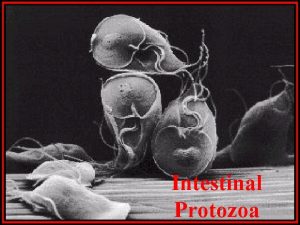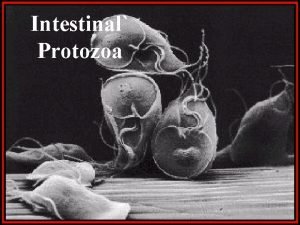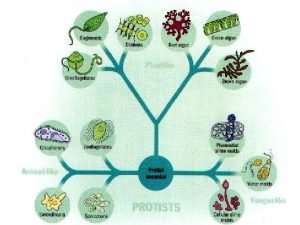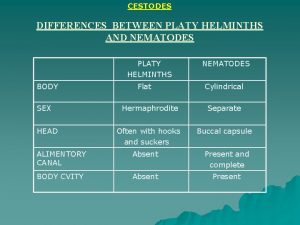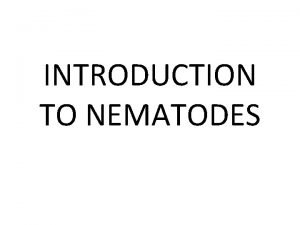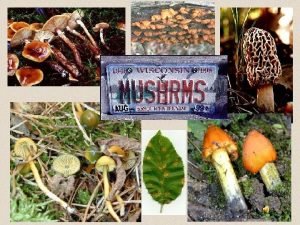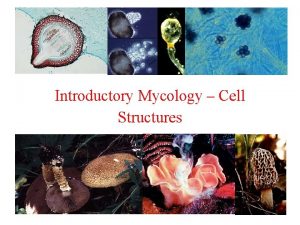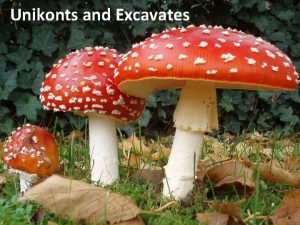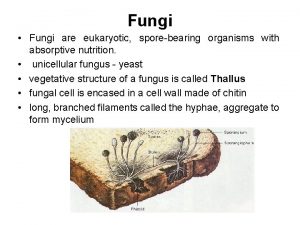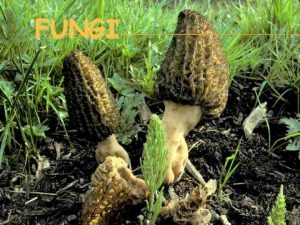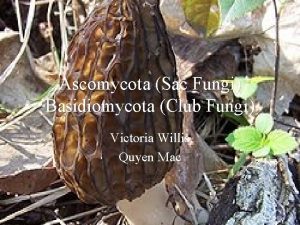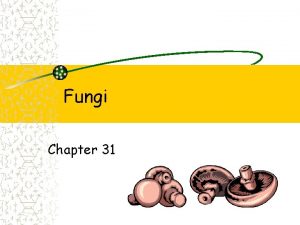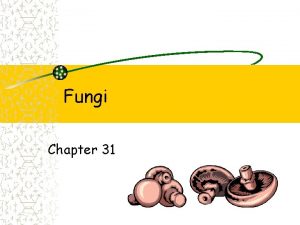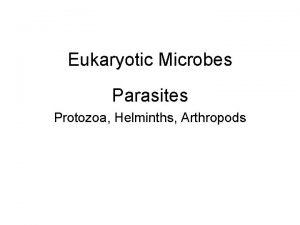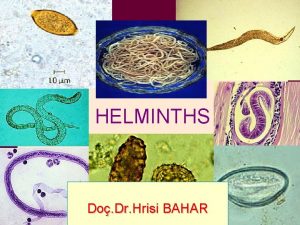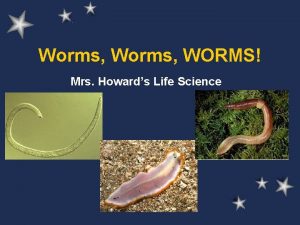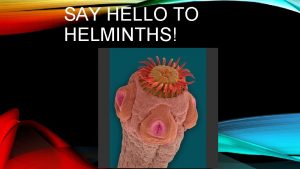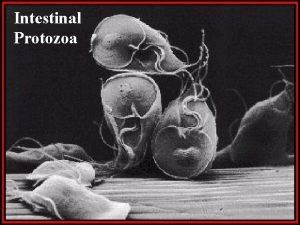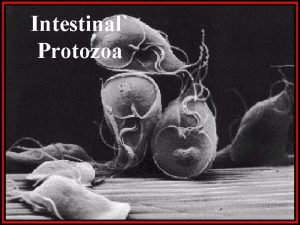Eukaryotic Pathogens Fungi Protozoa Not helminths worms in













- Slides: 13

Eukaryotic Pathogens • • Fungi Protozoa Not helminths (worms) in this lecture Remember these are all eukaryotes, with organelles and many of the same cellular characteristics that humans have. – Makes drug treatment more difficult. 1

Fungi • Review basic fungal biology • Often dimorphic – Yeast in body, mold in culture • Classification of fungal diseases (mycoses) – Superficial, cutaneous, subcutaneous – Systemic and opportunistic – Poisoning and allergies • Treatment – Azole drugs, amphotericin B, others 2

Cutaneous and subcutaneous • Dermatophytes: various genera – Cause skin and nail diseases – Referred to as Tinea (worm) because of the ringlike appearance on scalp. – Cause ringworm, jock itch, athlete’s foot, etc. – Limited to outer layer of skin • Sporothrix schenkii – Acquired from soil and plant material – Infects deeper into skin, but not systemic 3

Systemic Mycoses 4 • Generally acquired by inhalation of spores – Lung infections, may spread beyond into other tissues • Blastomyces (blastomycosis) • Coccidiodes (coccidiomycosis) • Histoplasma (histoplasmosis) – Most common in this area (Ohio and Miss. River valleys) – Many people exposed with asymptomatic cases • Many test positive for exposure

Opportunistic infections • Aspergillus (aspergillosis) – Variety of species, very common in soil, plant materials – Serious infections in immunocompromised – Allergies to A. fumigatus – Poisoning from aflatoxin from A. flavus • Candida (candidiasis)- normal microbiota – Cause of vaginal infections, diaper rash, thrush – Capable of infecting any part of the body – Dangerous in cancer patients, HIV infections, etc. 5

Opportunists-2 • Cryptococcus neoformans – Inhalation of spores – Can infect many parts, but has predilection for CNS – Particularly serious in AIDS • Pneumocystis carinii – Very protozoan like, but is a fungus – Most cases associated with AIDS – Serious lung infections: PCP (P. carinii pneumonia) 6

Protozoans 7 • Group responsible for human diseases are the animal -like protozoa. Old groupings: – Ciliates – Amoebae – Flagellates – Sporozoans (apicomplexans) • Protozoa typically have life cycles – Simple, like vegetative and cyst – Complex, like sporozoans have

Rogue’s gallery-1 • Ciliates – Balantidium coli: present in hog intestines • Source: contaminated water (farm runoff) • Disease: attack of GI tract • Ameobae – Entamoeba histolytica: fecal-oral transmission • Asymptomatic to severe diarrhea – Acanthameoba and Naegleria • Natural waters or through eye (Acanthameoba) • Cause brain infections; rare, fatal. (Naegleria) 8

Rogue’s gallery-2 • Flagellates – Trypanosoma: various species, geographic locations • Cause of African sleeping sickness, spread by bite of tsetse fly: Infection of CNS, causes coma • Cause of Chagas disease, spread by bite of reduviid bug: eventually damages heart tissue. – Leishmania: various species, range of disease severity • Causes leishmaniasis, spread by sandfly • Entered US consciousness after Gulf War 9

Rogue’s gallery-3 • Flagellates continued – Giardia: found in many places including “clean” water • Common cause of diarrhea; 1 -4 weeks. – Trichomonas • Present in genitourinary tract, sexually transmitted – Pain, pus, discharge • A switch: often asymptomatic in men www. ulb. ac. be/sciences/ biodic/Im. Proto 0003. html 10

Rogue’s gallery-4 11 • Sporozoans – Plasmodium: the cause of malaria, several species • Involves mosquito, liver, red blood cells in a complex life cycle. • Features a synchronous bursting of RBCs with fever, delerium, followed by rest and recovery, then cycle • Number one cause of global mortality and morbidity Intracellular plasmodia www. sirinet. net/ ~jgjohnso/plasmodium. html

12 Life cycle of Plasmodium www. sirinet. net/ ~jgjohnso/plasmodium. html

Rogue’s gallery-5 13 • Toxoplasma: kills fetus; many organs in immune compromised. • Part of life cycle involves cats, so pregnant women must stay away from litter box. • Cryptosporidium – Primarily livestock and poultry, acquired fecal-oral through food or contaminated water. – Famous outbreaks (e. g. Milwaukee) of contaminated municipal water supplies. – Diarrhea, but systemic spread as well, highly dangerous to AIDS patients.
 E histolytica cyst
E histolytica cyst Prenucleus
Prenucleus Entamoeba histolytica infective stage
Entamoeba histolytica infective stage Heterotrophic eukaryotes
Heterotrophic eukaryotes Difference between nematodes and cestodes
Difference between nematodes and cestodes Characteristics of helminths
Characteristics of helminths Fungi are eukaryotic heterotrophs
Fungi are eukaryotic heterotrophs Deuteromycota
Deuteromycota Fungi cell wall
Fungi cell wall Discicristates
Discicristates Conidiospores
Conidiospores Haustorium in fungi
Haustorium in fungi Basidiomycota and ascomycota
Basidiomycota and ascomycota Vocabulary workshop level d unit 1
Vocabulary workshop level d unit 1
